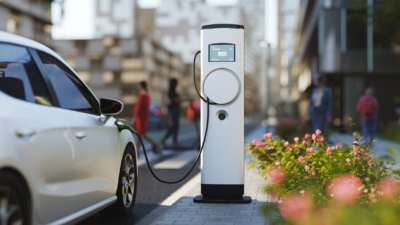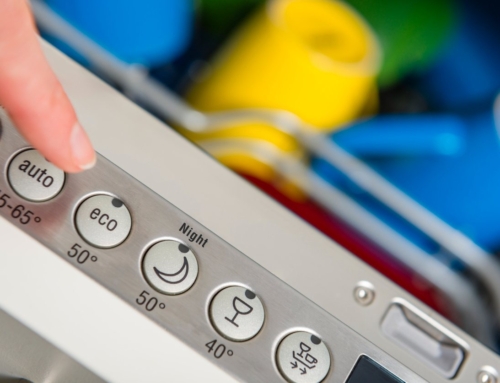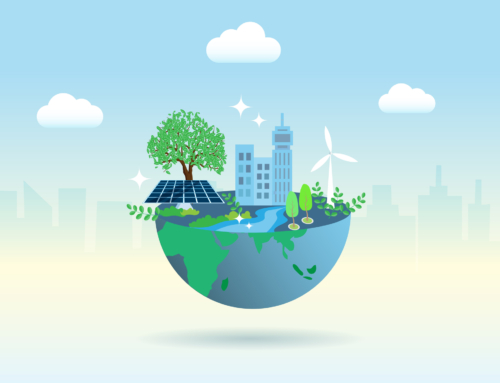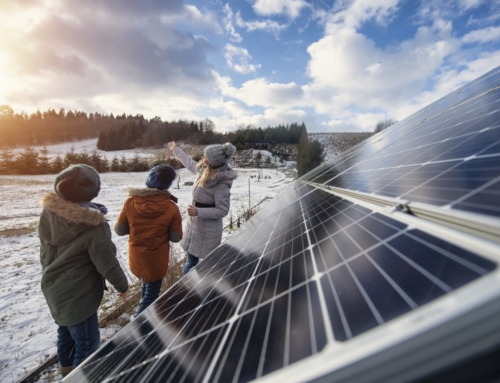In today’s increasingly digital world, the connection between modern technology and nature is more apparent than ever. Daily use of technology has become as natural to humanity as the movements of the clouds or a breeze through the trees. In fact, several technological innovations have made the business of protecting the planet—and all its natural wonders—an easier, more powerful process.
If you’re interested in learning more about the positive impacts of technology on the environment, you’re in the right spot. Read on to discover how green tech makes the world, including its natural ecosystems, a better place.

Why is Technology Important for the Environment?
In the past, technological advances have often come at the cost of the environment. Fortunately, that doesn’t have to be the case. As technology progresses, scientists find and fine-tune the best ways to work with and support our natural environment.
What is the positive impact of technology on the environment? Innovations in tracking, testing, and conserving our resources help avoid unnecessary waste and over-production. They also allow us to study ways to give back by improving recovery efforts for endangered plants and animals.
This same technology also helps prevent further pollution and monitor our impact on natural resources, effectively preventing problems before they start. Technological progress can actually create greater harmony with the natural world around us and provide a positive effect on the entire earth.
What Are the Positive Effects of Technology on the Environment?
Technology typically gets a bad rap when eco-friendliness comes to mind, but many tech advancements have played a crucial role in some of today’s most important environmental initiatives.
Resource Conservation
Before the digital age, businesses and consumers alike depended on the planet’s natural resources to get things done.
Fortunately, the increased availability of digital, electronic goods and services has allowed more and more people to utilize greener tech options to complete the same tasks, solve everyday problems, and stay connected.
As organizations and households continue to adopt these technologies, digital solutions replace the need for paper, fuel, oil, and other natural resources. These solutions include, but are not limited to:
- Cloud-based file storage systems
- Paperless billing
- Email and instant messaging
- Telecommuting and virtual team meetings
- Rechargeable batteries and devices
Waste Reduction
Pollution is much more than air and water contamination. Trash and waste are piling up in landfills around the world at a significant rate. The improper disposal of waste in these landfills generates harmful methane gas as objects decompose, which pollutes the surrounding land, water, and air.
Innovations in waste management have created new, eco-conscious technologies that help the environment. From improvements in recycling capabilities to AI waste-sorting procedures, technology has made the disposal and management of waste far more sustainable.
Cleaner Energy
Energy consumption has historically been one of the biggest threats to the planet’s healthy ecosystems. To combat these environmental pressures, green energy production is one of the most significant positive impacts of technology on the environment.
Clean, responsibly produced energy reduces harmful carbon emissions contributing to climate change. These greener technologies also tend to prioritize energy efficiency. Green energy production emphasizes smarter, more efficient power usage to further minimize any negative environmental impact.
Improved Sustainability
One of the many major challenges organizations face today is tackling the size of their carbon footprint or the volume of greenhouse gas emissions for which they are responsible. Decreased emissions mean a smaller carbon footprint, and thanks to innovations in green technology, it’s easier than ever for people and organizations to effectively minimize harmful emissions.
Ideas once considered impractical or costly, such as long-life batteries that cut down on energy waste, and electric-powered public transportation, illustrate that the positive effects of technology on the environment don’t require any significant compromise in lifestyle or efficiency.
In truth, sustainable technology is a rapidly growing field, one with a notably competitive market, so these innovations will continue to become faster, easier to use, and better for both people and the planet at once.
5 Technologies That Help the Environment
Eco-friendly technology is all around. From modern thermostats to solar power grids, every green gadget and sustainable device helps to protect the environment by providing a cleaner, planet-friendly way to get the job done.
1. Smart Appliances
Your house may be due for a few upgrades to appliances, and there is a compelling reason to make the switch sooner rather than later. Smart home appliances and devices use significantly less power than their older counterparts, which cuts down your energy consumption.
Some of the most common smart devices include:
- Dishwashers
- Ovens
- Coffee makers
- Televisions
- Thermostats
- Home cameras
- Vacuums
- Refrigerators
- Virtual home assistants
These devices are also typically built for smart energy usage. Many come equipped with automatic shut-offs and timers to ensure they’re only running when necessary, and some can even self-regulate with the help of AI sensors that adjust to seasons, schedules, and settings.
2. Electric Vehicles
The transportation industry is responsible for 27% of US greenhouse gas emissions. Electric vehicles aim to change that. Nearly every popular car manufacturer has at least one electric or hybrid model in their lineup, and for good reason. Conventional cars use nonrenewable fuel and oil, and tailpipe emissions heavily pollute the air.
Electric cars, on the other hand, are battery-powered and can be recharged using the same currents that power your home. When charged using clean energy sources, an electric car produces little to no greenhouse gasses across its lifetime, making it the greenest automotive option available on the road.
3. Connectivity and Communication
Information and education are crucial in the fight against climate change, and nowhere is there more information available than the internet.
Without information technology, a large percentage of the population would remain unaware of their impact on the environment. As we become increasingly connected, it’s easier than ever for a wider audience to become informed and get involved.
Social media campaigns and online publications are powerful ways to spread data, statistics, and information about pressing environmental concerns—and what we can all do to help.
4. Renewable Energy
For decades, electricity was powered only by nonrenewable resources. Unless new forms of energy generation were created, those resources would one day run out entirely.
Renewable energy sources such as solar, hydro, and wind power harness natural forces that generate energy at a higher rate than nonrenewable fossil fuels and are consumed at a more sustainable rate. Technology has enabled these renewable energy sources to tap into neverending power sources and improve their energy output for increased efficiency.
5. Conservation Devices
Do you want to cut down on your home’s water usage? Does your family need to keep an eye on how often lights and other electrical appliances are on or off? Green technology has the answer.
A variety of regulation devices can help individuals and organizations keep a closer eye on their resource consumption. Low-flow shower heads, for example, regulate the water pressure and output to conserve water every time the faucet is switched on, and smart plugs can be programmed on a timer to shut off appliances or devices while nobody’s home.
What Can We Do to Reduce Our Negative Impact on the Environment?
As humans, we rely on the natural world to sustain life. In turn, the world’s ecosystems rely on us to do the same. By taking action to lessen your environmental impact, daily habits can go a long way toward protecting the planet.
Here are 15 simple lifestyle choices that can minimize your negative environmental impact:
- Make the switch to LED light bulbs.
- Upgrade your appliances to high-efficiency models.
- Reuse old napkins and containers to cut down on waste.
- Unplug chargers and cords when not in use.
- Turn off the water while shaving or brushing your teeth.
- Buy locally grown and produced foods.
- Skip plastic grocery bags and use reusable ones.
- Install a low-flow sink, and faucet aerators.
- Properly recycle and dispose of plastics and other waste.
- Carpool or combine trips to save on fuel and cut down emissions.
- Start a kitchen compost system.
- Invest in a reusable water bottle and ditch single-use plastics.
- Reuse scrap paper or take digital notes when possible.
- Switch to green cleaning products around your home.
- Keep track of your trash output and try to use low or no-waste products.
Make a Difference with Spring Power & Gas
With the many positive impacts of technology on the environment in mind, we hope it’s easier to find ways to use technology to support environmental sustainability in your daily routine.
At Spring Power & Gas, promoting energy efficiency is one way we do our part in the fight against climate change. We do all we can to find ways to harness technology to save energy and protect the environment.
Ready to find out how you can make a difference on the planet with your power usage? Take a look at our different energy plan options in New Jersey, Maryland, and Pennsylvania to find out how you can stay energy efficient and lead a more eco-friendly life. Contact us today for answers to your questions.




![Top 11 Sustainable Building Practices for Eco-Homes [Plus 5 Sustainable Materials]](https://springpowerandgas.us/wp-content/uploads/2023/02/iStock-181062267-500x383.jpg)

